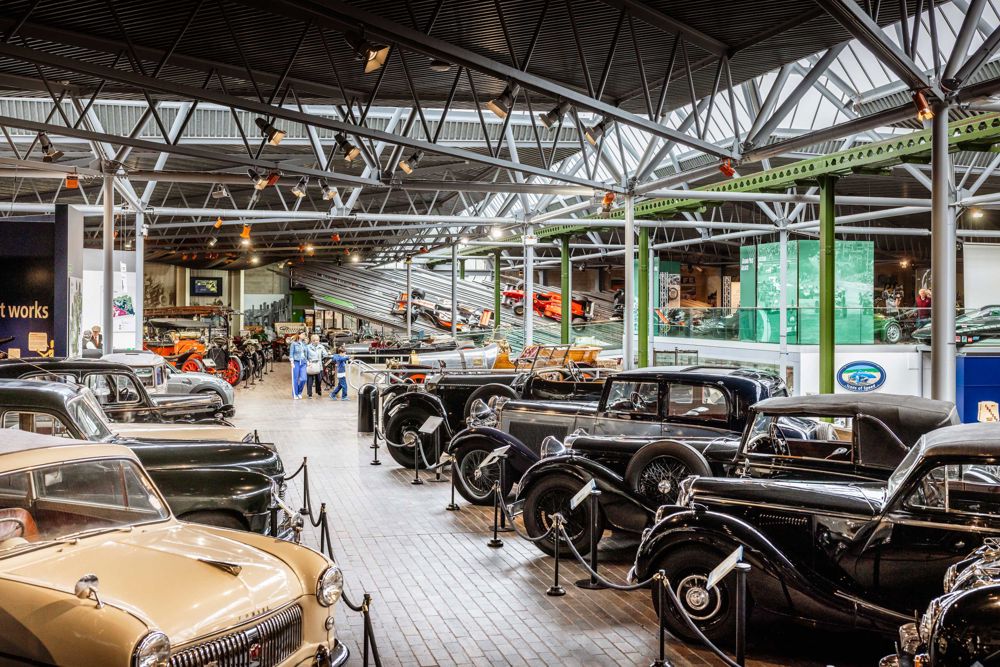Pioneers
Some earlier stories of LGBTQ+ figures in motorsport, especially, are shrouded in a layer of secrecy due to the cultures and laws of their time. Until 1967, intimate relationships between two men were illegal in the UK and men could be imprisoned if proved guilty. Whilst many of the figures we feature would have been known in their close circles to be LGBTQ+, they would have had to be careful to avoid being too open as they risked scandal and arrest.
1911-1990
Family wealth enabled Hugh Hunter to indulge his passion for motorsport. He took part in a wide range of motoring events, racing at Brooklands, Donnington and Crystal Palace, speed hill climbs like Shelsley Walsh, and the Welsh and Scottish Rallies. In 1937 he purchased his most successful car, a 2.9-litre twin super-charged Alfa Romeo. Dubbed “the world’s fastest road car” by the press, the Alfa Romeo had a maximum speed of 130mph. He enjoyed great success with it at Brooklands in 1939, winning eight races out of nine at the JCC Members’ Day meet.
In 1946 he started participating in the London to Brighton Veteran Car Run, driving a 1904 Siddeley named Daisy which he had bought from Brooklands track co-founder Dame Ethel Locke King in 1939. Hugh continued to drive until he was unable to continue due to ill health. On his death in 1990, he left his estate, including Ethel Locke King’s ‘Daisy’, to his long-term partner Derek. The collection is now held at Brooklands Museum.
Hugh is remembered as a great character, kind and generous to all the met with a wonderful sense of humour and was highly regarded by all those who knew him.
1899-1980
The illustrious motor racing career of Raymond Mays spanned over thirty years. He was very successful in hill climb events, taking the course record at Shelsley Walsh in 1929. In 1933 he co-founded English Racing Automobiles (ERA). ERAs were highly competitive in the late 1930s with a notable victory for Mays in the 1935 Eifelrennen at the Nürburgring. In 1947, he co-founded British Racing Motors (BRM) at his home in Bourne, Lincolnshire. Take a look at our BRM Type 15 in the Grand Prix Greats gallery and find out more about the development of the first BRM. Mays was awarded a CBE for services to motor racing in 1978, two years before his death.
Like Hugh Hunter, Raymond Mays never came out as being gay, but it was widely known within his close circles.
He frequently came into the factory with one, or sometimes two, good-looking young men who he showed around the cars.
1918-2011
In 1951, Roberta Cowell was the first known British trans woman to undergo gender-affirming surgery. Her story leading to that moment is remarkable.
Roberta was born in Croydon in 1918 and developed a passion for motoring at an early age. By 1939, Roberta had three racing cars with which to compete. She was a Spitfire pilot in the Second World War, getting captured when her plane crash-landed in Germany in 1944.
After the war, Roberta resumed motor racing but started to struggle mentally and sought medical and psychological help. It was felt that her determinedly masculine behaviour had been a sub-conscious reaction to her repressed innate femininity, which was now asserting itself. In 1951 Roberta had gender re-assignment surgery followed by facial surgery to feminise her features. Her story became big news and there was criticism of her transition in the press.
As Roberta, she resumed her flying and motor racing exploits, winning the Shelsley Walsh Hill Climb event in 1957.
What I knew deep down inside me though not consciously: my nature was essentially feminine and in some way my world was out of joint.

Subscribe for updates
Get our latest news and events straight to your inbox.